Phytotherapy — The Key To Hormonal Balance? A Detailed Guide
Phytotherapy — The Key To Hormonal Balance? A Detailed Guide
So many women I talk to are afraid to try herbal remedies because they’re uncertain about safety. They think that because a pharmaceutical drug has been studied in a laboratory, regulated by the FDA and prescribed by a doctor, it has to be safe. But the truth is that conventional medicine is responsible for 255,000 deaths per year in the United States, and almost half of those are from adverse reactions to prescription drugs.
Don’t get me wrong, modern medicine has saved millions of lives. But there are so many ways to heal our bodies naturally and with fewer side effects, especially when we take a closer look at the plant world.
Phytotherapy — the use of medicinal plants to heal and restore balance — is an age-old tradition that is slowly gaining more interest in the United States. And in my opinion, it’s been a long time coming. Plants hold truly amazing healing properties and some of the most exciting research is being done around how plants can act to naturally balance hormones. As we learn more about the underlying mechanisms of phytotherapy, science has been able to increase its effectiveness, while maintaining the gentle side effect profile herbal remedies are known for.
When you look at the numbers, it’s clear that the majority of the world’s population today relies on botanical medicine and a plant-based diet for survival. But in this country there continues to be so much fear around efficacy, safety and regulation. I know my patients need and deserve more information on this subject. So let’s take a closer look at phytotherapy and how it can gently and effectively restore health and hormonal balance.
What is phototherapy?
Phytotherapy is the use of plants, either in whole food form or in the form of standardized extracts and supplements, for healing purposes. Its roots trace all the way back to the beginnings of time and still stand strong in much of the world today.
It’s not surprising that the study of plants for medicinal purposes led to what we now know as pharmaceuticals. Most of the drugs conventional practitioners prescribe today have roots in the plant world. The difference is that pharmaceutical companies change the chemical structure of the compound not only to specialize and magnify its actions, but also to patent the medication and sell it as their unique product. Since plants found in nature can be used and sold by everyone, phytotherapy is more accessible to the general world. It is also, in most cases, much gentler on our bodies than pharmaceutical medications.
What I like about phytotherapy is that it’s used to prevent health concerns as well as treat them — which to my mind is much more in line with a functional approach to healing. Sadly, conventional medicine has moved into the dangerous habit of treating symptoms as they arise instead of looking at an individual’s whole health picture. Phytotherapy uses cell signaling to affect our bodies early on in the processes of disease and imbalance, which is ultimately far less disruptive to the system. For this reason the results often last longer. What’s particularly fascinating is the way phytotherapy works in conjunction with the endocrine system.
Phytotherapy: at home in your endocrine system
Your endocrine system is basically the command center for your hormones. It consists of numerous small organs scattered throughout the body — such as the pituitary gland, thyroid, adrenal glands and ovaries — as well as diverse tissues such as the gut, breast and skin. These various glands secrete hormones that take action in the brain, liver, heart, bone, skin and blood vessels as well as the reproductive organs — in other words, everywhere.
The word endocrine is used to define a cellular response to a hormone that originates from an endocrine gland located in another part of the body. Basically, hormones are messengers. They carry instructions from the brain and endocrine glands to other parts of the body. Plant molecules can also communicate these messages. In fact, they do so extremely well.
Responses within your cells that originate from the plant world are known as phytocrine. And phytocrines are the bioactive molecules in plants that share features with our own hormones and “connect” with our endocrine system. Phytocrines can be broken down into three broad categories:
Phytohormones structurally resemble the body’s native hormones, and can weakly or temporarily bind to hormone receptors in the body, promoting or countering actions similar to the hormones in your system.
Phytohormonogenics gently encourage the body’s tissues to generate more of their own native hormones.
Functional mimetics of hormones mimic hormone functions and can cause the same physiological response of the hormones native to your body.
It’s amazing to me that plants can interact so intimately with the hormones we make in our bodies. But if you think about it, we evolved alongside the plant world. So it makes sense that our bodies are fluent in their language. The other important aspect of phytotherapy is that the cells of your body and the plant molecules can communicate — which separates this kind of therapy from many prescription drugs.
Phytoestrogens — a misleading term
The word phytoestrogen literally means “plant estrogen.” But phytoestrogens are not estrogen. They do not behave the same way as our body’s own estrogens or like estrogen replacement drugs (ERT).
This is something many women — and their healthcare practitioners — are confused about. They worry that taking soy or red clover or other isoflavones will increase estrogen in their bodies, putting those with a personal or family history of breast or other cancers at increased risk.
The National Cancer Institute currently defines the word “phytoestrogen” as an estrogen-like substance found in some plants and plant products. They also state that phytoestrogens may have anticancer effects.
Phytoestrogens are part of the phytohormone class described at left, which means they structurally resemble the body’s native estrogen. Their chemical structure is such that it allows them to weakly bind to an estrogen receptor, potentially blocking excess estrogen, or, when estrogen is low, quieting the system’s need for estrogen. But they are not estrogen.
Here’s what we think is most important for women to understand: the phytoestrogens used and recommended today in botanical and nutritional medicine do not increase endogenous estrogen production in the body. And there are no studies confirming that phytoestrogens increase the risk for cancer.
In fact, new research suggests that phytoestrogens commonly used in nutritional and botanical medicine may protect women from breast and other cancers.
Phytoestrogens may also decrease the risk of heart attack and stroke, and protect your bones. A 2007 study in the Annals of Internal Medicine confirmed that the phytoestrogen genistein protects against bone loss. All of this while calming the symptoms of menopause! Scientists are discovering more benefits of phytoestrogens every day, and we plan to write more about this in the future, so stay tuned.
The adaptogenic effect — a more efficient and safe way to restore balance
In communicating with the plant molecules in herbal therapies, your body can oftentimes get what it needs — and only what it needs. Instead of slamming the system with large doses of medication — what I call the sledgehammer effect — your cells talk to the plant molecule upstream of the disease process to communicate what and how much they need. We call this an adaptogenic effect, meaning our bodies can respond to and use plant molecules in various ways, depending on how much and in what proportions we have of our own hormones on board and how smoothly we’re regulating and metabolizing them. So there is an astounding back-and-forth dynamic between plant cells and human cells that a man-made substance could never mimic.
Stronger pharmaceutical drugs do their work later, or “downstream” in the physiological process, leaving little to no opportunity for the body to communicate its needs. This can sometimes leave the body with too much or too little of the hormone or medication on board, which can ultimately leave the body more vulnerable.
Think about caring for a house plant. If you had a set amount of water to give your plant every time it needed water, on certain days it would most likely end up with too much or too little. Plants, like our cells, are living things and depending on the air, the sun and the soil they’re growing in, they may need more or less water on any given day. These factors, like our own internal and external environments, are constantly changing. We can grow healthy plants when we water them based on their needs, and they communicate those needs to us by how much water they suck in or let pool above the soil, by the texture and color of their leaves. It’s a give and take process, depending on the plant, as opposed to a standard “prescription.” Phytotherapy works in a similar way with our bodies. Like the plant caretaker, it watches and listens to our cells to gauge what is needed so your body has the right amount of the hormone in need.
I saw a patient the other day who was on Estrasorb, a patented topical bioidentical estradiol product that can be extremely helpful for some women during a period of hormonal imbalance. When I checked her estrogen levels, she was five times higher than normal! And this is a topical lotion. I wondered where she would be if she’d been taking conventional oral HRT. For some women Estrasorb works wonders, but others react differently. This is where conventional medicine often falls short, because it treats all women with hormonal imbalances relatively similarly. When in reality, we are all different and require different treatment. Phytotherapeutic agents give your body a chance to say something before it is forced to accept — or reject — a treatment.
Phytotherapy and menopause
Since opening our doors at Women to Women, we have been drawing on the healing power of herbs to safely help women with hormonal imbalances. Especially when layered overtop a foundation of healthy lifestyle and dietary choices, phytotherapy can gently help women reverse hormonal imbalance and maintain better equilibrium in menopause. With its adaptogenic effects, phytotherapy can help normalize, strengthen, and protect your system from many stressful events in menopause.
Using herbs for menopausal symptoms is becoming more popular in the wake of the Women’s Health Initiative revealing dangerous side effects of conventional hormone replacement therapy. Naturopathic physican Tori Hudson writes in her article, “Menopause Botanicals”:
Botanical therapies for menopause symptoms are taking an increasingly important role. Many women are determined to utilize therapies that are herbal or nutritional, natural hormones, or lower dose hormones in combination with botanicals, in order to create a risk to benefit ratio that they feel comfortable with.
Dr. Hudson also reminds us that using herbs for menopause isn’t a new concept. She explains that “many herbs have been used traditionally by herbalists and women for decades and in some cases centuries to address menopausal symptoms. Although many of the traditionally used plants lack clinical studies for this purpose, the empirical evidence and tradition is strong.”
Here are some of the plants that have been widely used for menopausal symptoms
Black Cohosh (Actaea Racemosa)
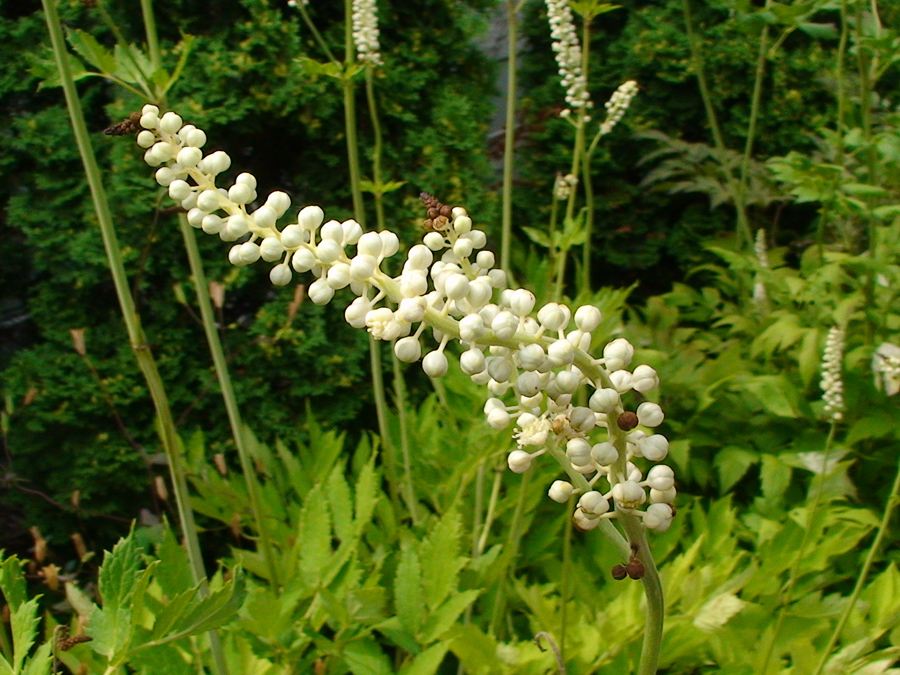
A plant native to Eastern North America, has been used by women all over the world for generations to help with hormonal balance. It is thought to act as a functional mimetic, primarily by binding to opioid receptors in the brain to affect tissues in the body.
Red clover (Trifolium pratense)
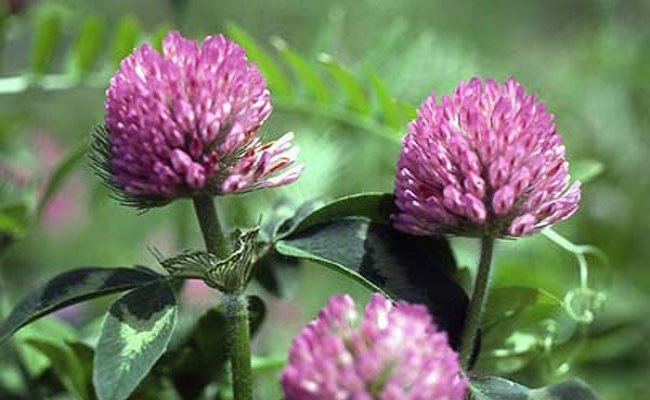
Red clover is rich in phytoestrogens including lignans, coumestans, and isoflavones. As I described above, isoflavones can weakly bind to estrogen receptors in the body. This makes red clover a helpful herb for menopausal symptoms.
Chastetree (Vitex agnus-castus)
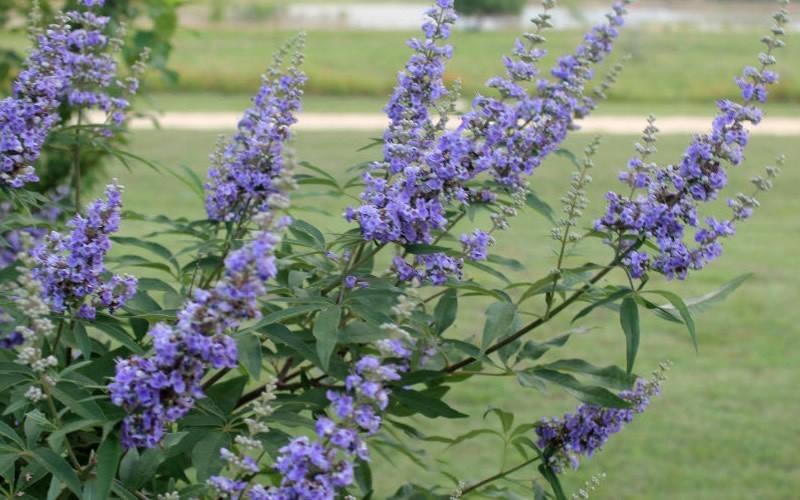
Has active molecules that may affect our neurotransmitters, particularly dopamine, which acts in the brain and other parts of the body. Recent studies are showing that properties of this herb may mimic the soothing actions of progesterone.
Kudzu (Pueraria lobar)
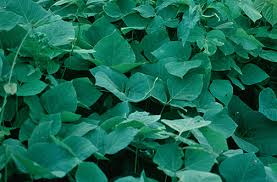
Kudzu is a member of the pea family and is native to Asia. Much like red clover, it contains phytochemicals that function in a protective fashion. These include five major isoflavanoids that can bind weakly to estrogen receptors, quieting the body’s need for estrogen during times of hormonal imbalance.
Passionflower (Passiflora incarnata)
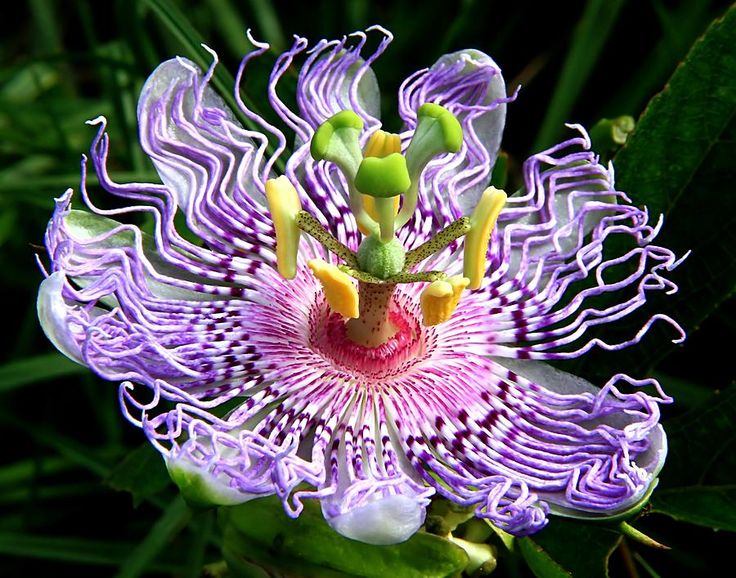
Passion Flower has strong Native American roots and contains natural monamine oxidase inhibitors (MAOI’s), which are known to have antidepressant and anti-anxiety properties.
Ashwagandha (Withania somnifera)
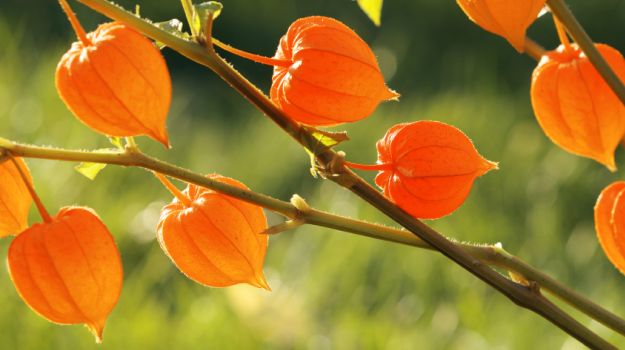
Is an herb with aphrodisiac and mood-stabilizing properties. Recent studies suggest this Ayurvedic herb can act in an adaptogenic fashion when androgen levels are low, activating the hypothalamic-pituitary-gonadal axis to increase the production of androgens.
Wild yam (Dioscorea villas)
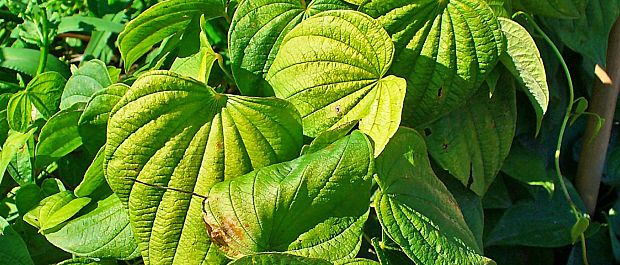
Is native to North America and has been used for both menopause and menstrual-related symptoms. Research suggests that it acts as a functional mimetic of progesterone.
Soy (Glycine max) Like red clover and kudzu, soy is a member of the legume family and contains phytoestrogens. It has been extensively studied and found to be supportive for improved insulin regulation, weight loss, bone health, and nail, skin and hair health. It has also been shown to decrease frequency and severity of menopausal discomforts, particularly vaginal dryness, hot flashes and night sweats. Even though these remedies have been used around the world for centuries, unfortunately many women remain skeptical.
Like red clover and kudzu, soy is a member of the legume family and contains phytoestrogens. It has been extensively studied and found to be supportive for improved insulin regulation, weight loss, bone health, and nail, skin and hair health. It has also been shown to decrease frequency and severity of menopausal discomforts, particularly vaginal dryness, hot flashes and night sweats. Even though these remedies have been used around the world for centuries, unfortunately many women remain skeptical.

Bad press for herbs and menopause
You may have heard negative news about certain herbs for menopause. One of the biggest complaints I hear is that they don’t work. In my opinion, this argument arises for two different reasons: first, the desire for a one-size-fits-all cure and second, our own impatience. The honest truth is that the-one-size-fits-all cure for menopause simply doesn’t exist. If I know one thing from working with women all these years, it’s that menopause looks different in every single one of us. While one woman may have hot flashes and insomnia, another may have anxiety and fuzzy thinking or mood swings and night sweats or any combination of these symptoms. And though the root cause of your hot flashes is hormonal imbalance, the specific hormones that are high or low are unique to each woman, and vary over time.
We each have different needs when it comes to restoring and maintaining balance. So it stands to reason that what works for one woman may not work for another. This is one of the reasons why I recommend a phytotherapeutic agent that includes more than one herb. In this way, diversity gives you the benefit of trying several plants in small doses, instead of trying one at a time in larger doses. Science also suggests that combination formulas work in an adaptogenic and synergistic way to restore hormonal balance within a range of variable circumstances.
A diverse phytotherapeutic agent offers lower doses and a gentler approach, but can also take more time to be effective. In this country we’ve gotten so used to medicine taking effect immediately. If it doesn’t work within a few days (or even minutes), we may toss the package in the garbage and look for something else. Phytotherapy often requires more time to have an effect than most pharmaceuticals. This is because it is gentler than the drugs manufactured today — and I don’t think this is a bad thing. The more gently our bodies are coaxed from hormonal imbalance to balance, the better. Shock isn’t good for any system.
Returning the power to your hands
When my family and I were in Belize a few years ago, we went on the howler monkey tour in the low-lying tropical rain forest for which Belize is famous. What I found so amazing was that our tour guide knew which trees and plants cured which disorder by watching the monkeys. He would say, “Oh that one must have diarrhea, that one must have indigestion, this one is having trouble sleeping.” We’ve shared this intuitive wisdom about medicinal plants with our primate cousins since the dawn of the ages, but only recently have we in the United States begun to reawaken to its power. Today, scientific advances are providing a much better understanding of why phytotherapy works and the quantity and form of the plants that act most reliably and safely.
What conventional medicine does is takes something that’s oftentimes soft and gentle and makes it into a sledgehammer. Pharmaceutical companies do this because they want to make sure a drug works and they want to make sure it works for the “average” person in their studies. In part this also has to do with creating something foreign enough to the human body that they can “own” the rights to it in order to make money. But it also stems from the very real problem that we all face in medicine. And that is that most practitioners today cannot spend more than five to seven minutes with each of their patients, which makes the one-size-fits-all approach even more appealing.
At Women to Women, we spend whatever time it takes with our clinic patients and find that individualized medicine works best. But I know that in most places this is an anomaly. That’s too bad, because it leaves so many women with limited options. A trial of gentle phytotherapy may offer a woman the chance to naturally find her own balance in health.
Here are some guidelines to using herbal medicine that our patients have found helpful along the way:
Know your body. We are all different, and I’ve learned through many years of practice that there is a subset of the population (upwards of 30–40%) who detox at a slower rate than the rest of the population. This group is generally highly sensitive to most therapeutic agents and needs a lighter dosage. If this is something you’ve learned about yourself, honor that and vary your dosages accordingly.
Monitor your progress. Though negative interactions and side effects are relatively sparse with herbal remedies (most of the truly harmful herbs have been eliminated from the herbal pharmacopoeia), we always recommend monitoring yourself carefully when trying any new therapy.
Don’t take herbs and drugs in the same sitting. This can change the rate at which a drug is absorbed. In other words, take them at different times of the day, and ask your healthcare practitioner if you need to know what time to take your regular medications. Always be sure to update your healthcare practitioner on what you are taking.
Look for standardized extracts. Although some may argue that using standardized extracts takes away some of the whole-herb qualities and strays from the roots of herbal medicine, we feel that standardized extracts can help decrease some of the unpredictability of using plants for healing. Now you certainly don’t have to choose them — particularly if you are well-versed in the use of herbs or have a professional herbalist or naturopath you can consult with — but standardized extracts provide pure isolated active components of the plant at guaranteed levels. This is particularly useful when you are looking for the known target range of efficacy of an herb.
In diversity there is strength. Finding a phytotherapeutic remedy that combines a range of plant constituents is oftentimes more effective in quelling symptoms than a single herb.
Have patience. In most cases, using herbal remedies takes time to build up an effect in the body. This is because they do their gentle work at the source of the imbalance and it may take time to heal metabolic pathways that have been off-balance for many years.
A gentler way to health
Phytotherapy continues to amaze me. As I talk every day with my patients and friends in the world of functional medicine, we are learning more and more about how phytochemicals speak to our bodies. They can help boost digestion, cool an overactive inflammatory response, rebalance hormones, build immunity, facilitate stable blood sugar, improve adrenal reserve, detoxify the liver, slow our heart rates, tone our blood vessels, conserve our bones, soothe our nervous systems, restore a healthy sleep cycle, and live longer happier lives. I could go on and on. But in the end, drawing on the gentle healing qualities of plants allows us to reconnect and reintegrate ourselves with the natural order of things. And it’s been working for centuries.
So instead of hitting a small nail with a sledgehammer, the way so many prescription drugs do, I advocate using a small hammer for a small nail, allowing your whole system some relief. We have a saying in medicine that I’m sure you’ve heard before: Primum non nocere, meaning “First do no harm.” To my mind, phytotherapy is much more in line with this promise than the widespread use of prescription drugs, and I’m willing to bet that using a gentler approach to healing would cut down on the amount of harm we do in medicine, making our promise one we can truly keep.
Be the first to post a message!
